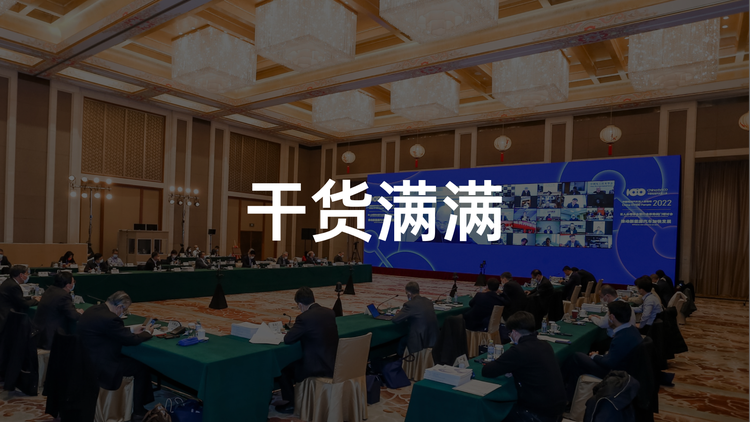China EV100 Forum (2022) ended after a 3-day brainstorming
The largest “brainstorming” in the automotive industry was held in the car circle from Friday to the weekend, which lasted for three days. The China EV100 Forum (2022) with the theme of “Embracing a New Stage of Market-Oriented Development for New Energy Vehicles” has officially come to a close.
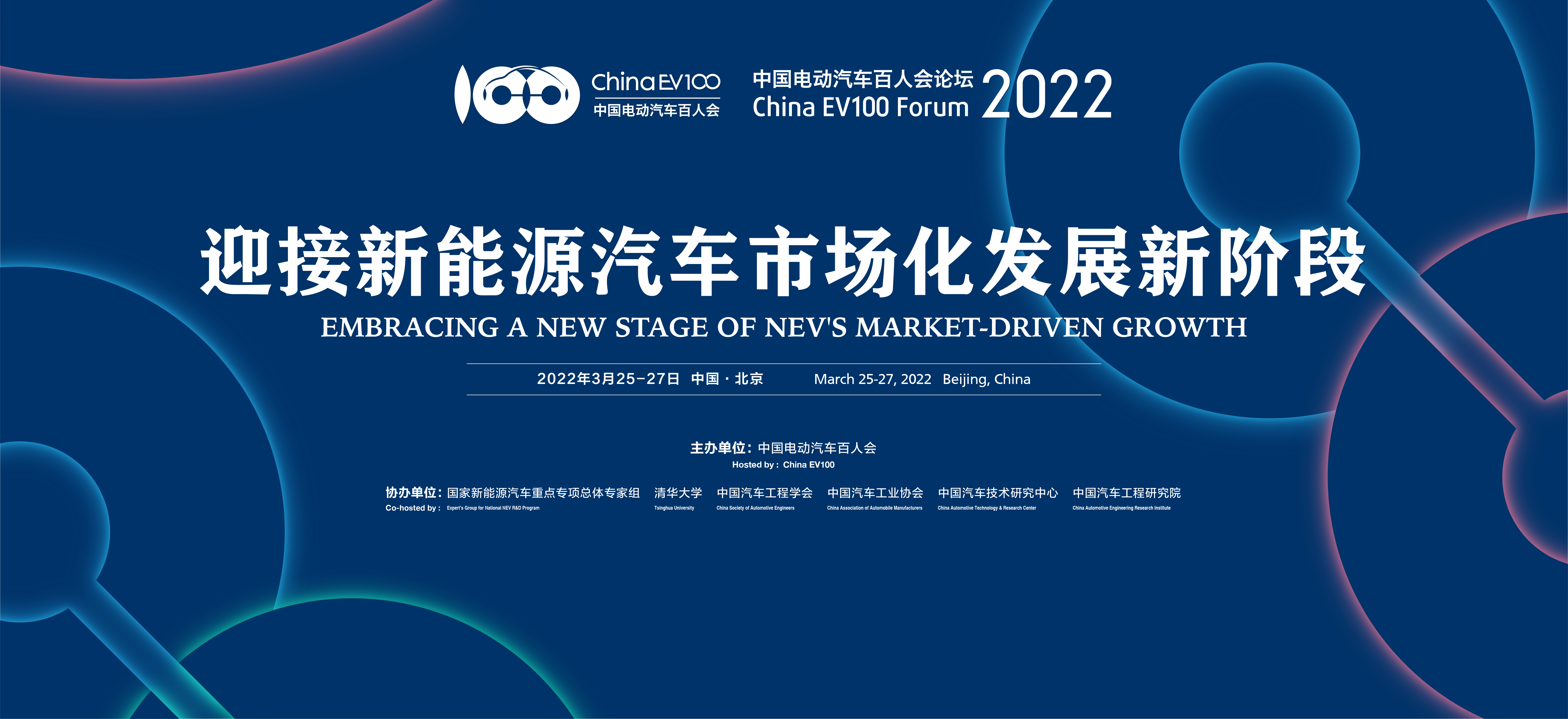
During the three days, a total of 14 meetings were held with prominent figures in attendance, delivering substantial information with a high density of content. This article focuses on the information about electrification, making it easier for readers to understand.
Solution to the Rise in Battery Raw Materials Prices
Recently, the rising price of battery raw materials has undoubtedly been everyone’s biggest concern. The price of battery-grade lithium carbonate has surged from about RMB 50,000/ton last year to about RMB 500,000/ton recently, and other battery raw materials such as nickel, cobalt, and copper have also seen significant price increases. After being passed on to car companies, we have seen 50 new models from 20 new energy vehicle companies having their prices increased since 2022.
When will the abnormal rise of “monster lithium” and “monster nickel” end? Li Zhen, Party Secretary and Chairman of CATL, Ouyang Minggao, Academician of the Chinese Academy of Sciences and Vice President of China EV100, Sin Guobin, Vice Minister of Industry and Information Technology (MIIT) and other experts gave a report on this at the China EV100 Forum 2022.
Ouyang Minggao: The balance between the supply and demand of lithium resources will be restored in 2-3 years
Ouyang Minggao pointed out at the meeting that due to the explosive growth of new energy vehicles, battery prices will increase, and there will be an even greater amplification effect when conveyed to the materials sector. The reasons for this round of price increases are basically the same as those for the lithium resources increase from 2016 to 2018.
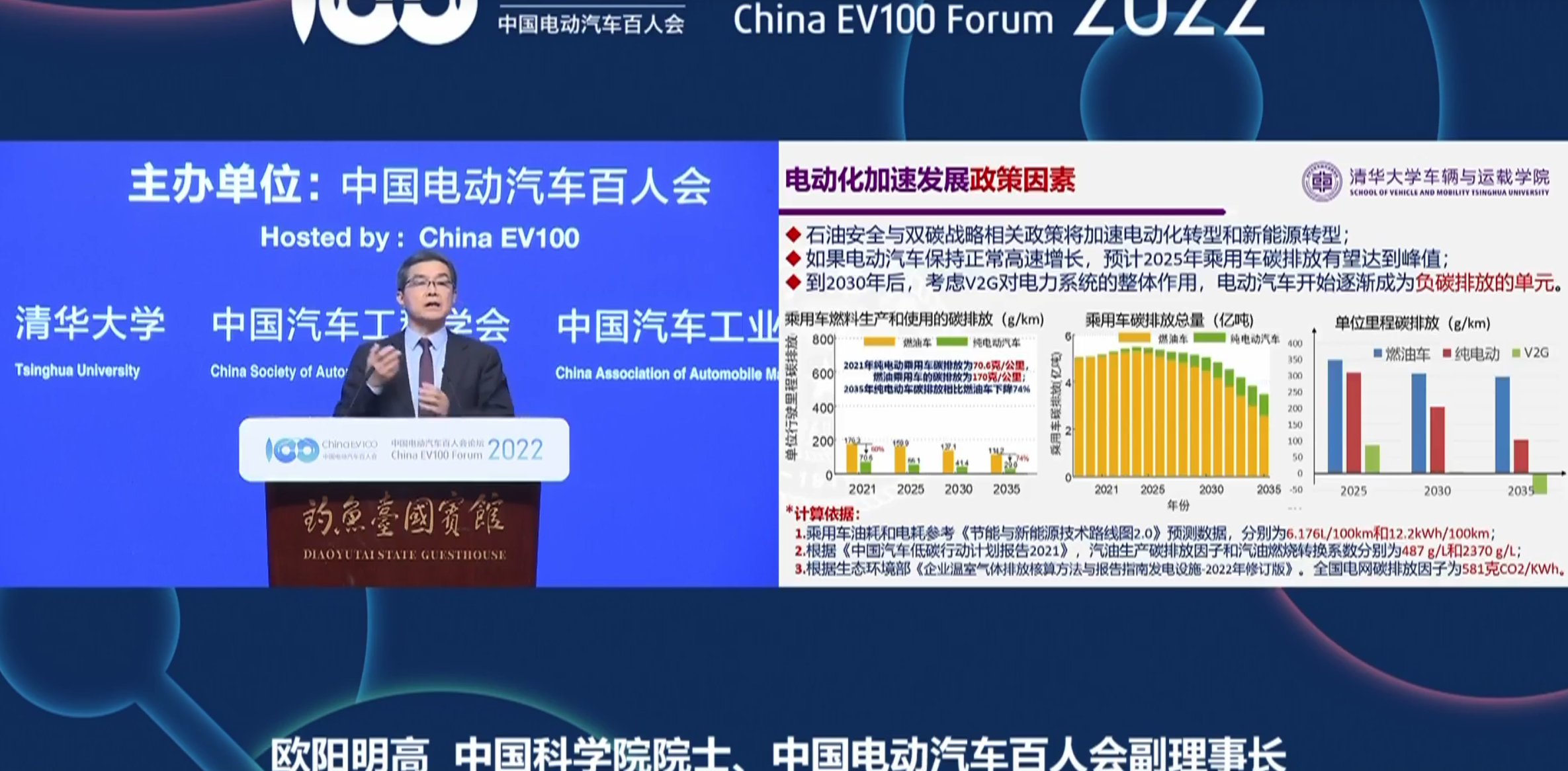
From the perspective of supply and demand, the demand amplification brought about by panic inventory storage is temporary. With the improvement of the supply capacity of lithium carbonate, it will gradually return to the basic demand level. It is expected that the balance between supply and demand will be fully restored in two to three years.
From the supply side, the global economically recoverable lithium resources have increased rapidly, with a 400% increase from 2005 to 2010. Now, the global economically recoverable lithium is 22 million tons, and the NCM811 battery can produce 227 TWh of power. Assuming each car is equipped with a battery of 100 kWh, it can be installed in over 2.27 billion cars. As demand increases, new exploration amounts and economically recoverable lithium will continue to increase, and resources are more than sufficient.
At the same time, battery material recycling is expected to reach a scale after 2030, and the supply of primary mineral resources and recycled resources will reach a considerable level around 2050. In the longer term, recycled resources will gradually replace the demand for primary resources.
Li Zhen, Chairman of CATL: Yichun, the “Lithium Capital of the World”, will end the shortage of lithium resourcesLi Zhen pointed out that in 2021, China consumed 300,000 tons of lithium resources, while importing and producing approximately 330,000 tons of lithium resources in the same year. It is expected that China’s demand for lithium resources will be 600,000 tons by 2025.
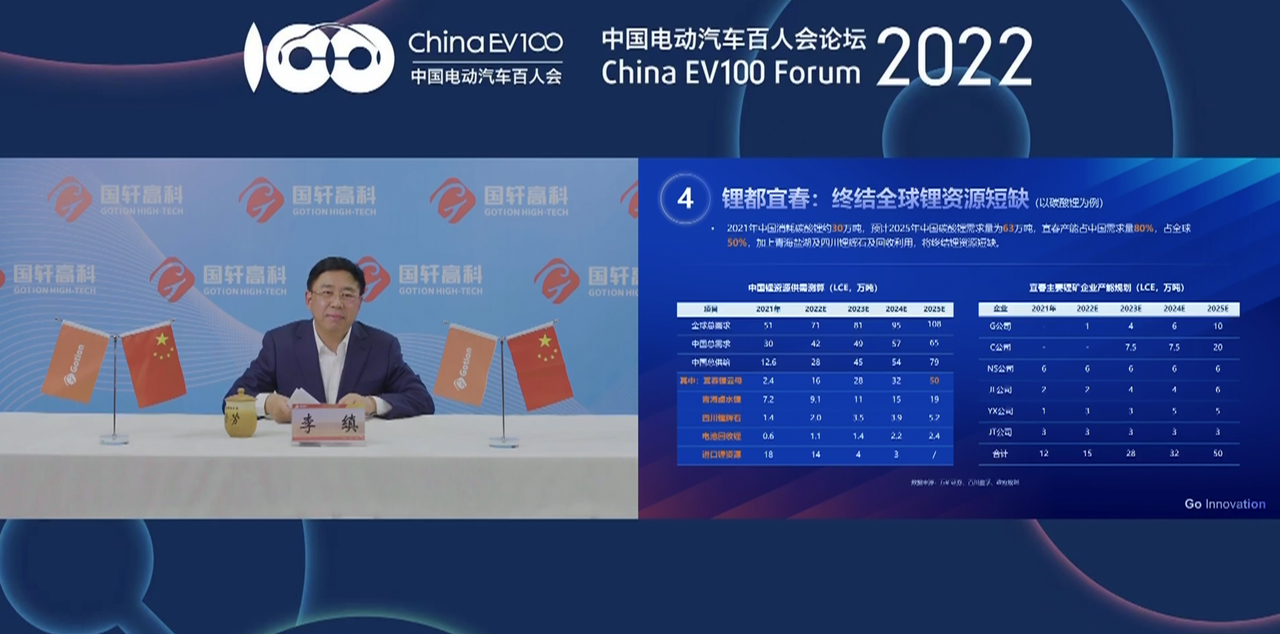
From 2021 to 2025, with the rapid growth of Yichun Lithium Mica Project, the improvement of Qinghai brine lithium extraction technology, the exploitation of Sichuan Lithium-Hematite resources, and the progress of battery recycling technology, the demand for imported lithium resources will be greatly reduced. It is expected that by 2025, 500,000 tons of lithium resources will be developed in Yichun, which will completely end the shortage of lithium resources in China.
In addition, Li Zhen pointed out that, unlike fossil fuels, the battery, as the carrier of the new energy industry, is fully recyclable. When the total demand for raw materials for battery manufacturing and the total supply of materials from recycled batteries reach a balance, human beings will no longer need to endlessly exploit resources from nature to manufacture batteries. Guoxuan High-tech believes that this time will come around 2040.
Xin Guobin, the Vice Minister of Industry and Information Technology: High Attention to the Problem of Rising Raw Material Prices for Power Batteries

Xin Guobin, the Vice Minister of Industry and Information Technology, stated at the Electric Vehicle Hundred-People Forum that the problem of significant price increases in raw materials for power batteries needs to be highly attention and thoroughly studied and resolved. China should moderately accelerate the pace of domestic resource development, and resolutely crack down on unfair competition behaviors such as hoarding and speculation. The upstream and downstream enterprises of the industrial chain should be guided to strengthen cooperation, jointly develop, and promote the return of key raw material prices to rationality. Accelerate the formulation of the Management Measures for the Recycling and Utilization of Power Storage Batteries for New Energy Vehicles and improve the recycling and utilization system.
Diverse Battery Technologies
China is at the forefront of the global battery industry. In 2021, more than 70\% of the world’s battery production capacity came from China. At this Hundred-People Forum, well-known battery companies such as CATL, Guoxuan High-tech, BAK Battery, EVE Energy, SVOLT, and Panasonic brought their latest concepts and technologies.
CATL: “Kirin Battery” capacity increased by 13\% compared to the 4680 system, and a new mode of combination and replacement was launched.
At the Hundred-People Forum, CATL’s chief scientist Wu Kai brought some interim results:
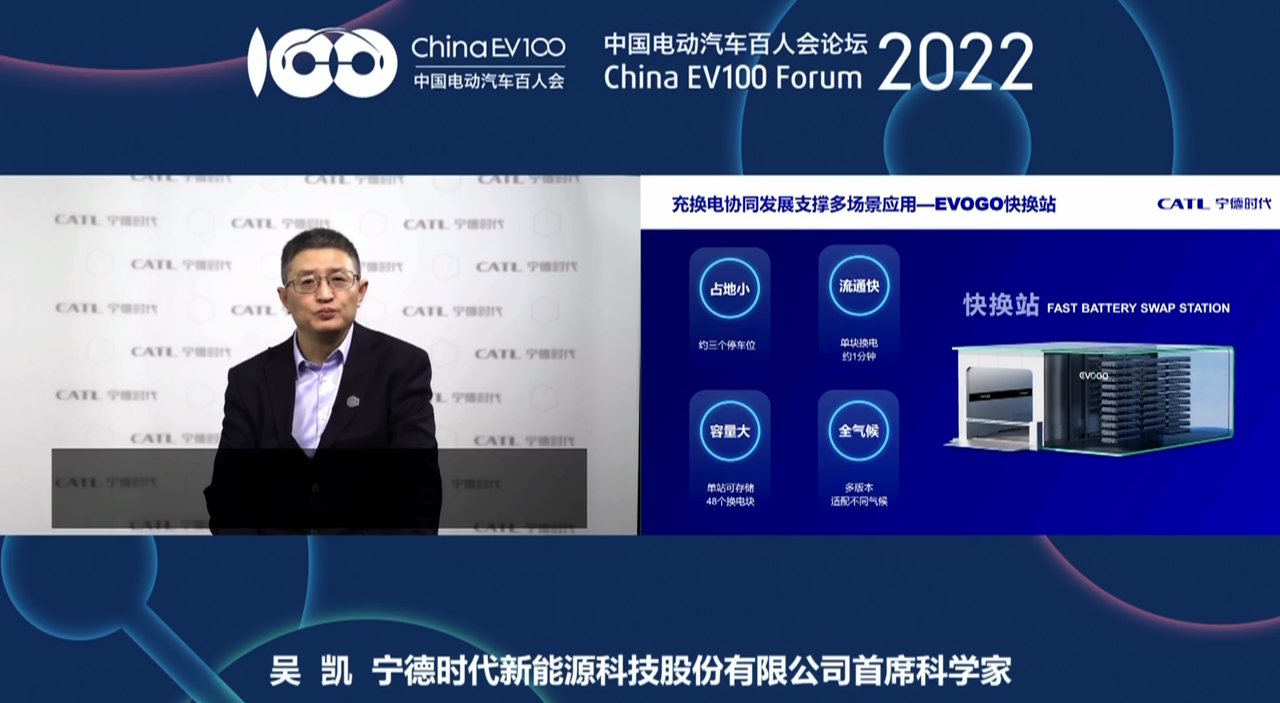 Firstly, the third generation CTP (Cell to Pack) technology, internally known as “Kirin Battery”, continues to lead the industry in weight, energy density, and volume energy density. Under the same chemical system and the same battery pack size, Kirin Battery can increase the capacity by 13% compared to the 4680 system.
Firstly, the third generation CTP (Cell to Pack) technology, internally known as “Kirin Battery”, continues to lead the industry in weight, energy density, and volume energy density. Under the same chemical system and the same battery pack size, Kirin Battery can increase the capacity by 13% compared to the 4680 system.
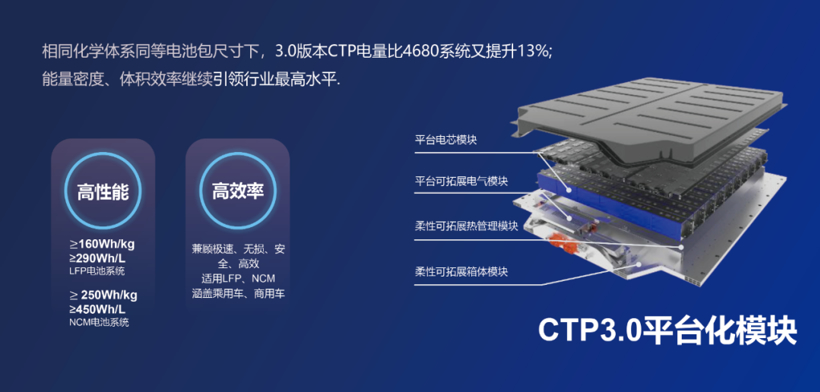
In terms of battery safety, the high-specific-energy and non-thermal diffusion technology will be in mass production in 2023.
Finally, in the field of battery swapping, CATL has proposed the EVOGO combination battery swapping solution with the following advantages: first, it requires a small area, only about three parking spaces; second, the battery circulation speed is fast, and it takes approximately 1 minute to replace one single battery block; third, the battery swapping station has large capacity, and a single standard station can store 48 battery blocks. Additionally, different versions of battery swapping stations can be adapted to different climate environments in different regions.
Battery swapping separates the vehicle and the battery, which can reduce the user’s initial purchase cost and allow flexible selection of the number of battery packs according to actual needs. For automakers, standard battery packs can be adapted without independently investing in battery swapping stations, enabling sharing of battery swapping networks. For battery swapping operators, the station can be compatible with different levels and brands of vehicles, providing economic benefits. For society, infrastructure sharing can avoid duplicate investment of social resources, such as land and electricity, and avoid problems of insufficient utilization rate.
Guoxuan High-tech: 230 Wh/kg Lithium Iron Phosphate Battery Will Be Gradually Mass-Produced by the End of This Year
At the meeting, Li Zhen, Secretary of the Communist Party Committee and Chairman of Guoxuan High-tech, stated that the 210 Wh/kg lithium iron phosphate battery has been industrialized, and the 230 Wh/kg lithium iron phosphate battery will also be gradually mass-produced at the end of this year, and lithium iron phosphate batteries will replace ternary batteries on a larger scale.
At the same time, the technological progress of ternary batteries themselves is also actively changing the current situation. Guoxuan High-tech’s 360 Wh/kg ternary semi-solid-state battery is rapidly approaching industrialization and reducing the use of raw materials.
Biken Battery: The Market Share of Large Cylinder Cells Will Exceed 30% by 2025
Fan Wenguang, Vice President of Biken Power Battery, stated at the meeting that the large cylinder cell is the best solution for mid-to-high-end electric vehicles in the next 5-10 years. By 2025, the market share of large cylinder cells will exceed 30%, or about 480 GWh, surpassing the total demand worldwide in 2021.
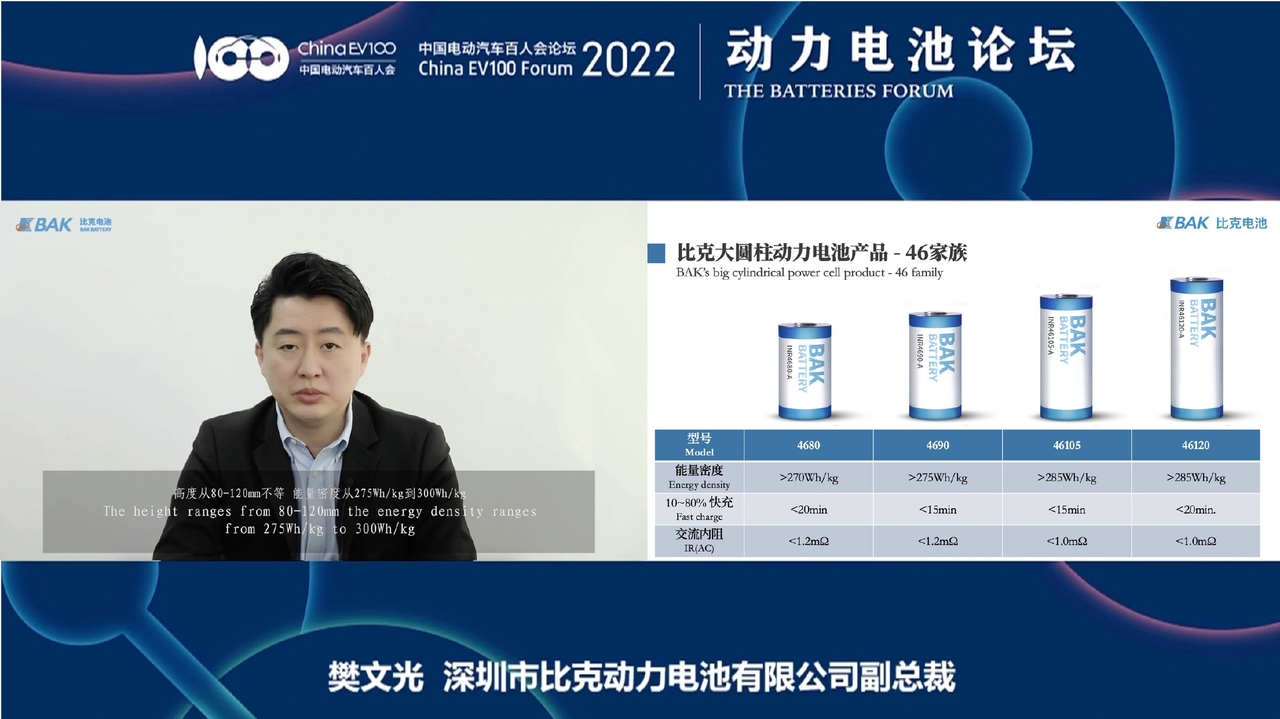 Currently, the BYD 26105 aluminum shell battery is in the B-sample stage, with an energy density of 270 Wh/kg and a power density greater than 2,000 W/kg. It can achieve a range of over 700 kilometers, 500 kilometers of range can be charged in 12 minutes, and can undergo more than 800 pure fast charge cycles. In addition, BYD will mass-produce batteries with an energy density of 285 Wh/kg by 2024.
Currently, the BYD 26105 aluminum shell battery is in the B-sample stage, with an energy density of 270 Wh/kg and a power density greater than 2,000 W/kg. It can achieve a range of over 700 kilometers, 500 kilometers of range can be charged in 12 minutes, and can undergo more than 800 pure fast charge cycles. In addition, BYD will mass-produce batteries with an energy density of 285 Wh/kg by 2024.
Meanwhile, the BYD 46 family of products varies in height from 80-120 mm, with an energy density ranging from 275 Wh/kg to 300 Wh/kg, a fast charge of 10-80%, with the fastest charge being 15 minutes and the slowest being 20 minutes.
CATL: Bullish on Large Cylindrical and Prismatic Iron Lithium Batteries
Liuzhou-based Contemporary Amperex Technology Co., Ltd. (CATL) Chairman Zhou Jia said that in terms of cell structure, the industry has moved toward large cylindrical cells and large prismatic cells, which have better safety and economy. Large cylindrical cells have already become a research hot spot in the industry and are becoming the ultimate technology direction of power batteries.
At the same time, lithium iron phosphate (LFP) battery technology has significant advantages in terms of service life and price competitiveness, providing a low-cost and quality battery solution for mass-produced vehicles for long-term use. Therefore, CATL believes in the development of cylindrical ternary cells and stacked LFP cells.
Panasonic: Strives to Mass-Produce Cobalt-Free Batteries Within Three Years, 4680 Batteries Will Become the Mainstream
Panasonic President Kazu Nakayama said at the summit that in 2010 Panasonic began mass-producing the 18650 cylindrical battery, and in 2016 it began mass-producing the larger-capacity 2170 cylindrical battery.
For environmentally friendly electric vehicle batteries, Panasonic is committed to maximizing capacity, cost, and supply capabilities, and to that end, Panasonic is striving to mass-produce cobalt-free batteries within three years. The 4680 battery will become the mainstream of cylindrical batteries in the future, with quality and safety being Panasonic’s strong suit.
Electric Vehicle Declarations from Automakers
BYD: Energy Density is No Longer the Most Important Indicator for Power Battery, Hybrid is Still the Mainstream for Private Cars.BYD Chairman and CEO Wang Chuanfu pointed out at the Hundred-People Meeting that currently more than 60% of households in China still do not own cars. While pure electric vehicles focus on increasing purchases, plug-in hybrid vehicles effectively address the first-purchase and replacement demands of more households, creating an obvious substitution effect in the huge stock of gasoline vehicles. Plug-in hybrid vehicles are an important path to achieving the dual-carbon goal, with relatively gentle reforms that help stabilize the industrial and supply chains, and achieve a smooth transition from gasoline to pure electric vehicles.
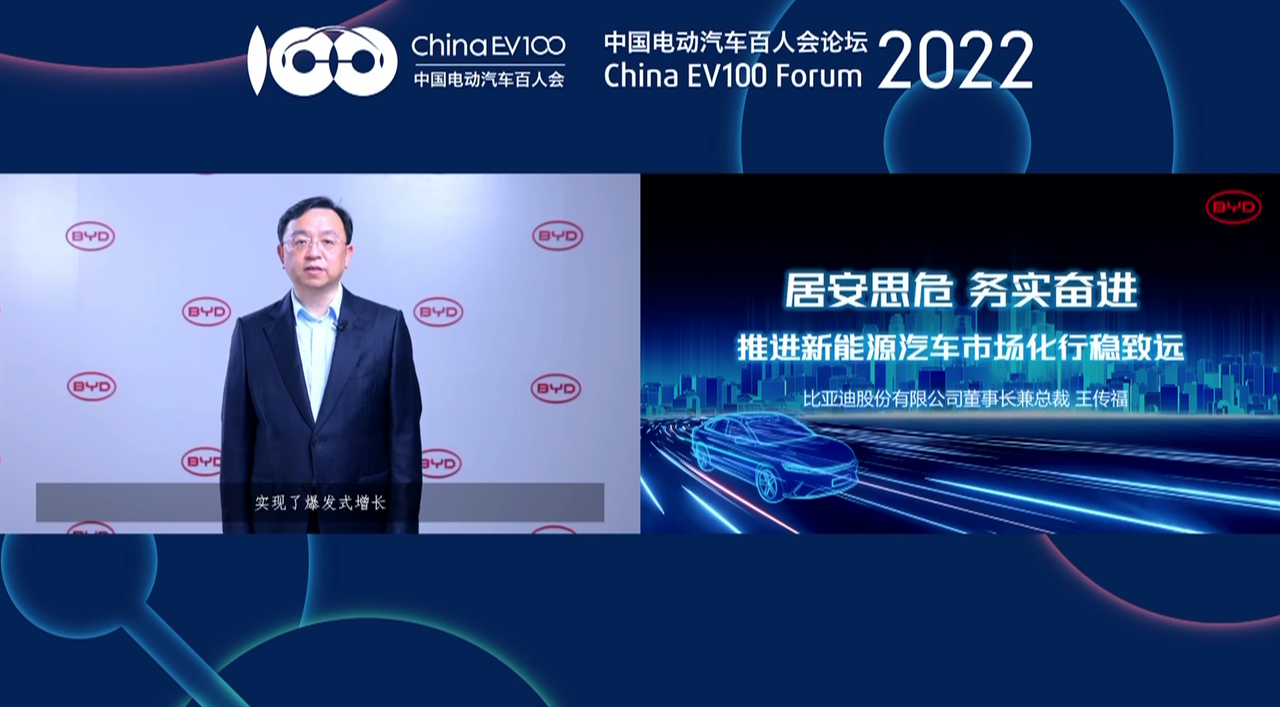
In addition, when the endurance mileage of an electric vehicle reaches 500 kilometers, energy density is no longer the most important indicator, and indicators such as safety, cost, and cycle life may become more important. BYD has launched blade batteries to solve safety issues, achieving a package energy density equivalent to that of ternary batteries, with stronger cycle life and safety factor, and bringing lithium iron phosphate back to the right track. At the same time, China cannot be choked by oil in the era of gasoline cars and by cobalt and nickel in the era of electric cars. Lithium iron phosphate does not contain rare metals and is more compatible with social resource bearing capacity.
Changan: New energy vehicle sales target of 1.05 million units and a ratio of 35% by 2025
Changan Automobile Party Secretary and Chairman Zhu Huarong proposed that in the next five to ten years, Changan Automobile will focus on new energy vehicles to achieve a double increase in sales and efficiency. By 2025, Changan’s new energy vehicle sales target is 1.05 million units, accounting for 35%, and by 2030 the new energy vehicle sales target is 2.7 million units, accounting for 60%.
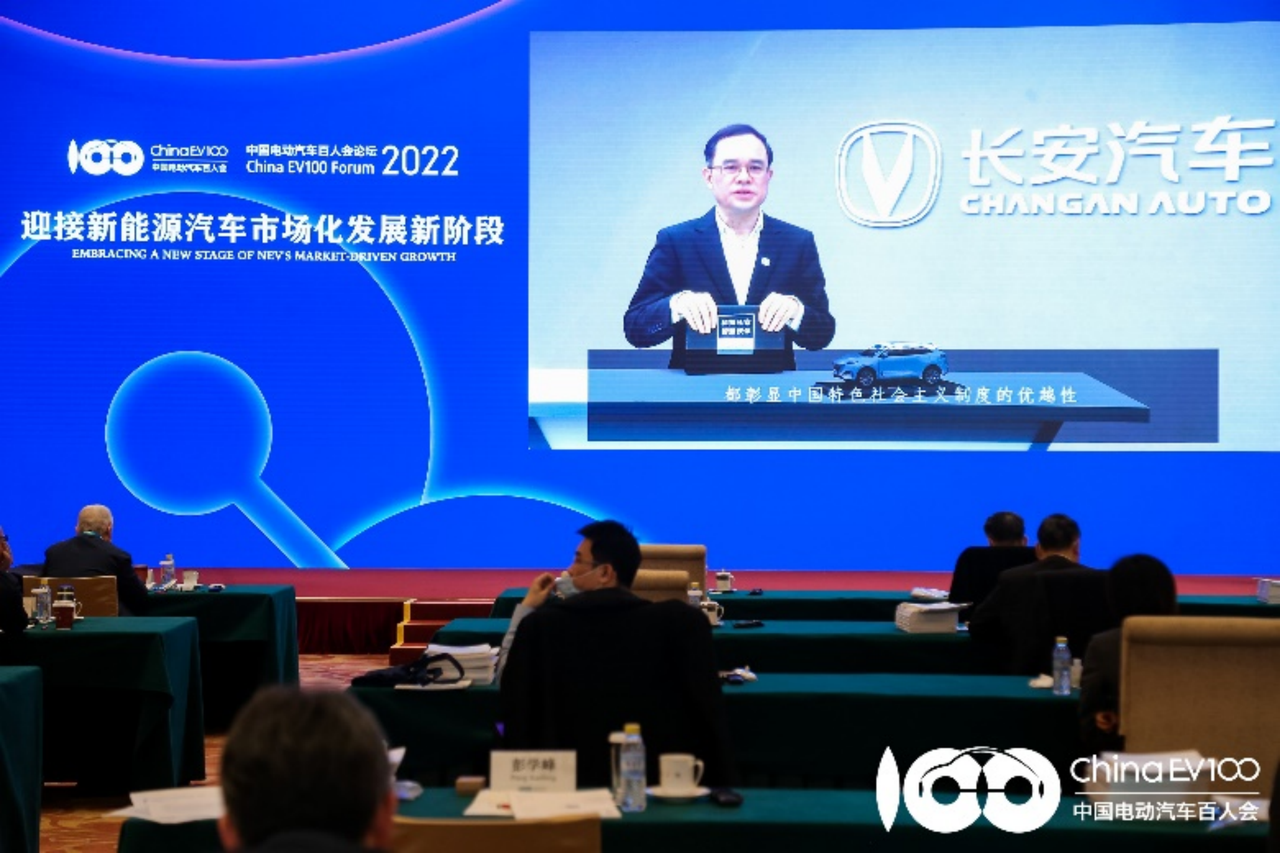
In addition, Zhu Huarong pointed out that Changan Automobile has already mastered more than 400 core technologies in the field of new energy, and has an expert-level engineering and R&D team with a total of more than 3,500 people in the fields of new energy, automatic driving, and intelligent interaction.
XPeng: Ranked No.1 among China’s new carmakers, with an average price of RMB 250,000
He XPeng, Chairman and CEO of XPeng Motors, announced at the conference that in 2021, XPeng delivered 98,000 intelligent vehicles throughout the year, becoming China’s No.1 new carmaker and ranking sixth or seventh among all EV automakers in China. In addition, XPeng’s average price reached RMB 250,000 after subsidies, which is a very difficult situation, equivalent to the entry-level of BBA.
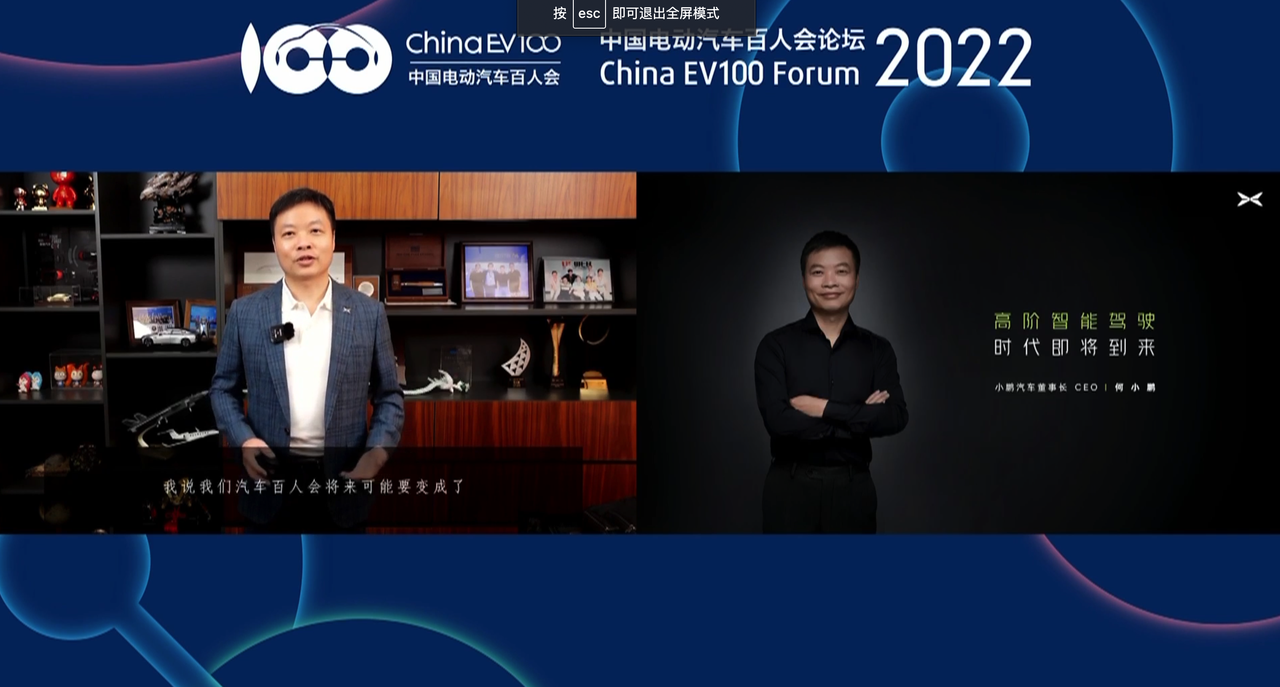 ### Ideal: Leading the Mid-size and Large SUV Market in the Past Year
### Ideal: Leading the Mid-size and Large SUV Market in the Past Year
Li Xiang, founder and chairman of Ideal Automotive, stated at the Hundred People Conference that in the past year, Ideal Automotive ranked first in the mid-size and large SUV market, surpassing all electric cars, fuel cars, and PHEVs. Ideal Automotive is also one of the few companies in China whose single car monthly sales volume of over 300,000 RMB continued to exceed 10,000 vehicles, receiving enormous recognition from the real market.
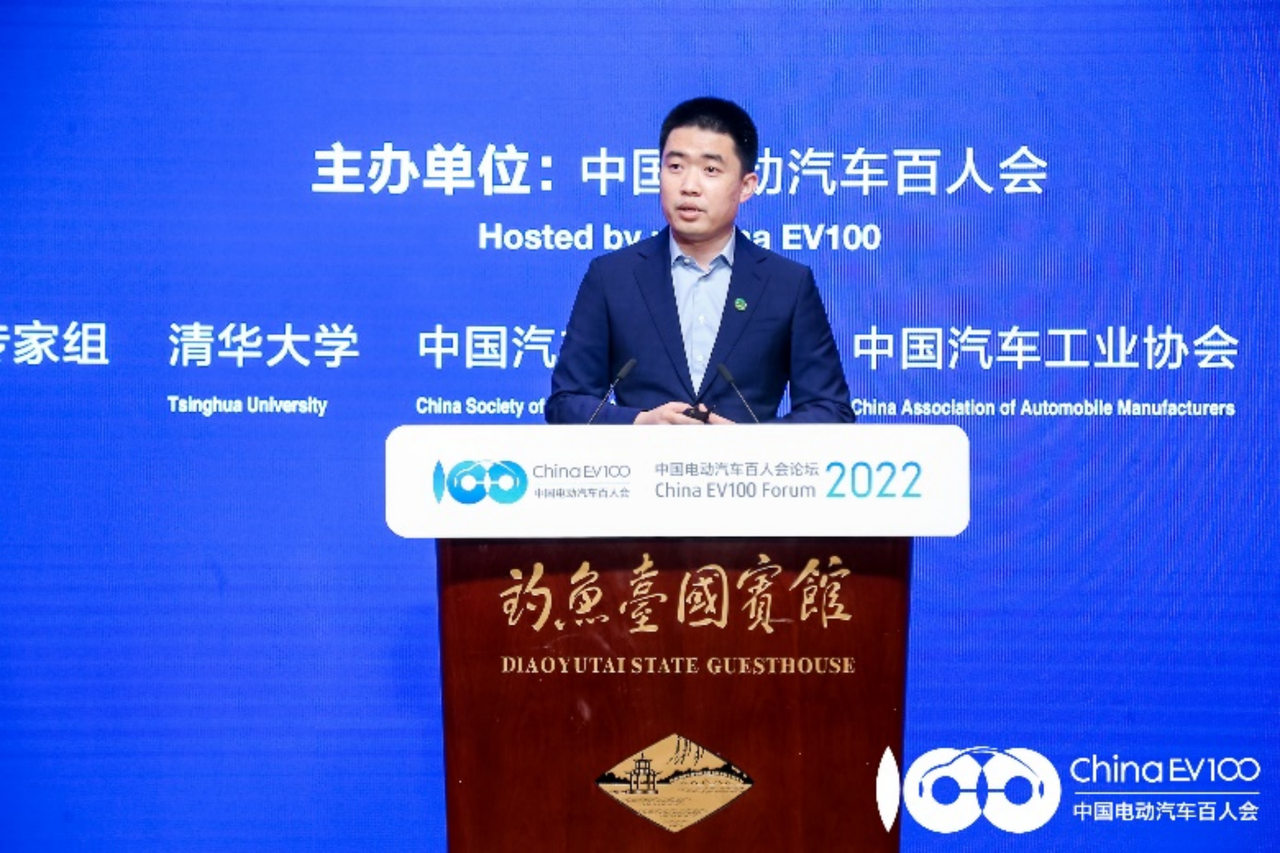
Li Xiang also mentioned that if we look forward to 2030, or even further to 2035, centralized electric energy and distributed liquid energy powered by electric grids will coexist in the long run.
BMW: Expected to Deliver Approximately 10 Million Pure Electric Cars Globally by 2030
Mr. Jolyon Gernal, CEO and President of BMW Greater China, announced at the Hundred People Conference that in 2022, BMW will mass-produce and experiment with 15 pure electric models, covering approximately 90% of the segmented market. By the end of 2025, BMW plans to deliver 2 million pure electric cars; and by 2030, BMW expects to deliver approximately 10 million pure electric vehicles globally.
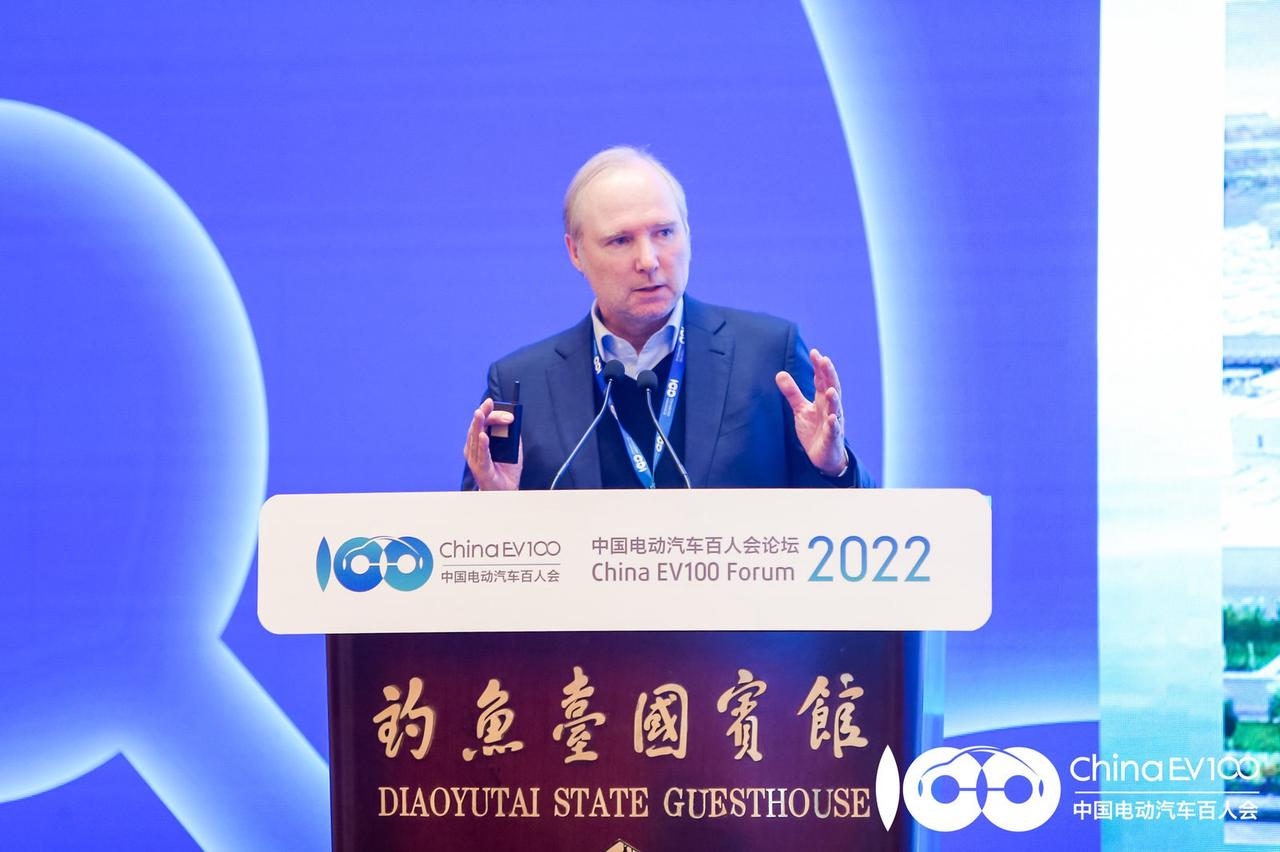
BMW has set clear carbon reduction targets: by 2030, BMW plans to reduce the average carbon emissions of each car’s full lifecycle by 40% compared to 2019, including a 20% reduction from the supply chain end, an 80% reduction from the production end, and a 50% reduction in the usage phase.
Regarding charging infrastructure construction, through its cooperation with Chinese companies, as of the end of February this year, BMW has connected 380,000 public charging piles, including 200,000 DC fast charging piles.
Volvo: To Become a Pure Electric Luxury Car Enterprise by 2030
Jim Rowan, CEO and President of Volvo Auto Group, stated at the conference that Volvo will adopt new sustainable materials and accelerate electrification transformation, becoming a pure electric luxury car enterprise by 2030.
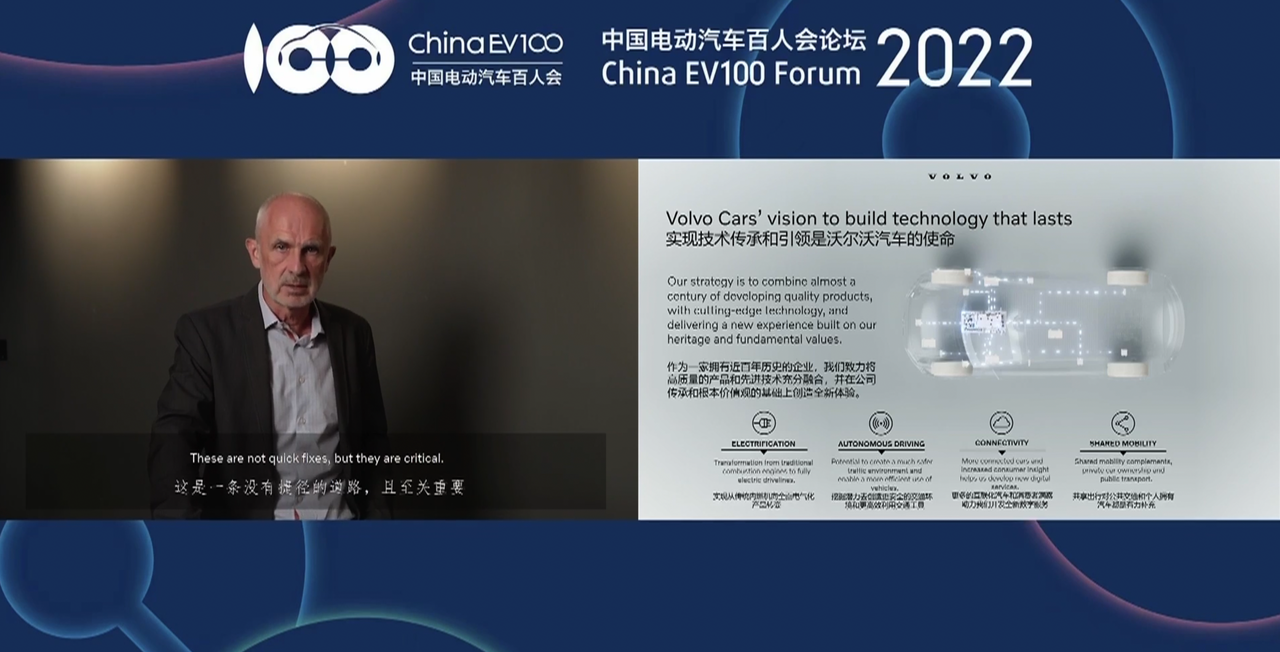 In terms of autonomous driving, Volvo Car and its Chinese technology partner have begun testing autonomous driving features and services. And in order to achieve sustainable development and zero emissions goals, Volvo Car is adopting new sustainable materials and investing more advanced safety technology.
In terms of autonomous driving, Volvo Car and its Chinese technology partner have begun testing autonomous driving features and services. And in order to achieve sustainable development and zero emissions goals, Volvo Car is adopting new sustainable materials and investing more advanced safety technology.
General: The ultimate goal is to electrify all new models by 2035
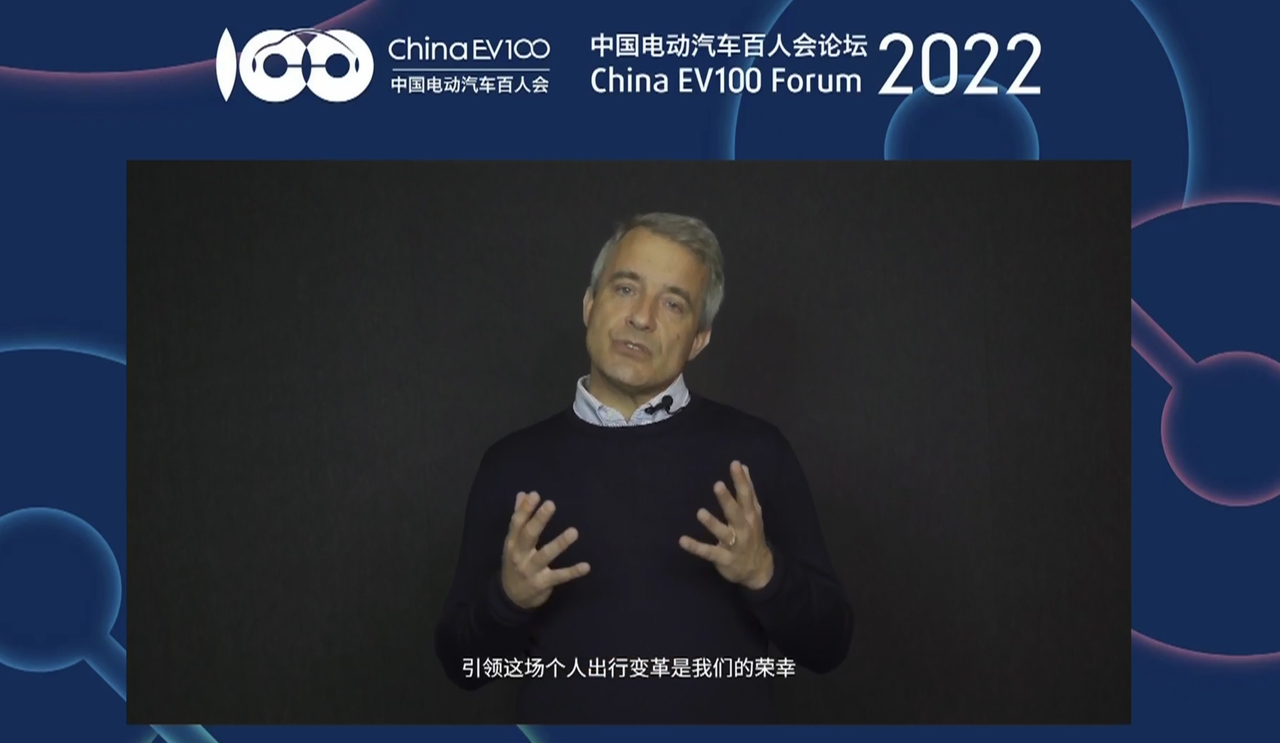
Julian Blissett, Executive Vice President of General Motors Global and President of GM China, said at the meeting that by 2025, GM will launch more than 30 electric vehicles globally, of which over 20 electric vehicles will be available in China, and the ultimate goal is to electrify all new models by 2035. By then, GM will achieve 100% renewable energy supply worldwide. With a dual approach of product and operation strategies, GM will achieve carbon neutrality in 2040.
Finally, welcome everyone to download the Garage App to learn about the latest news on new energy. If you want to get more immediate communication, you can join our community by clicking here.
This article is a translation by ChatGPT of a Chinese report from 42HOW. If you have any questions about it, please email bd@42how.com.
